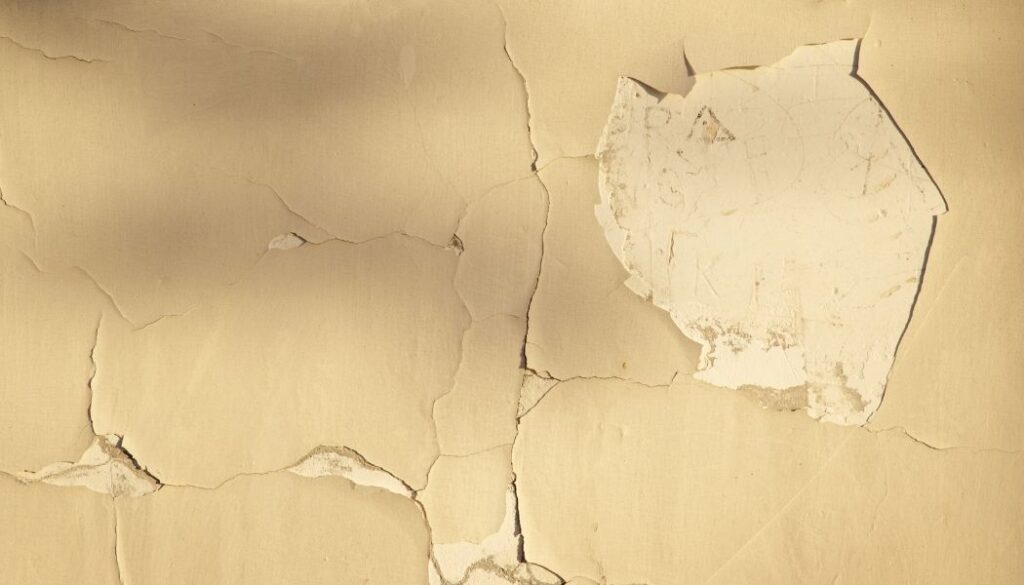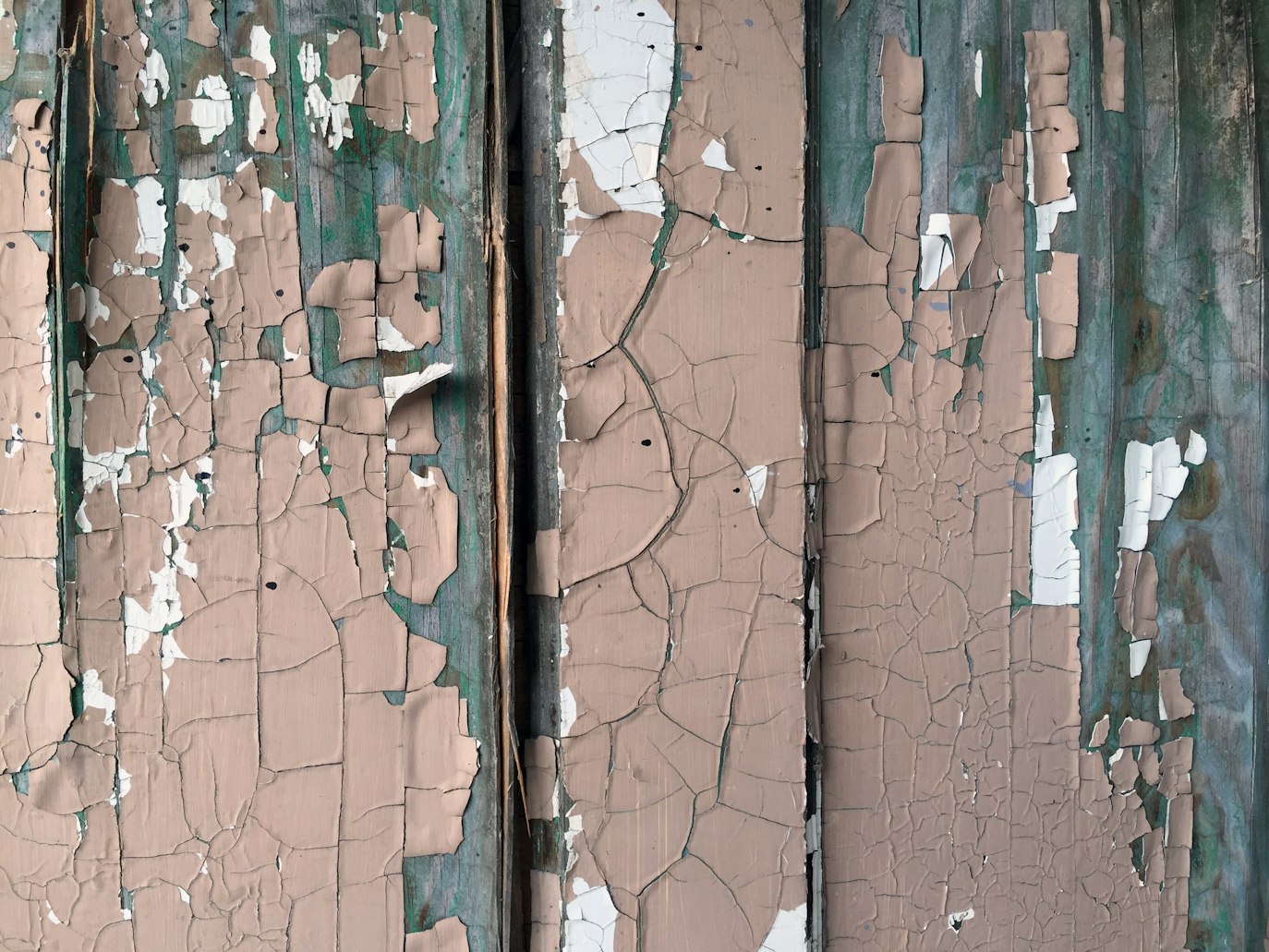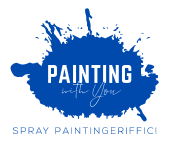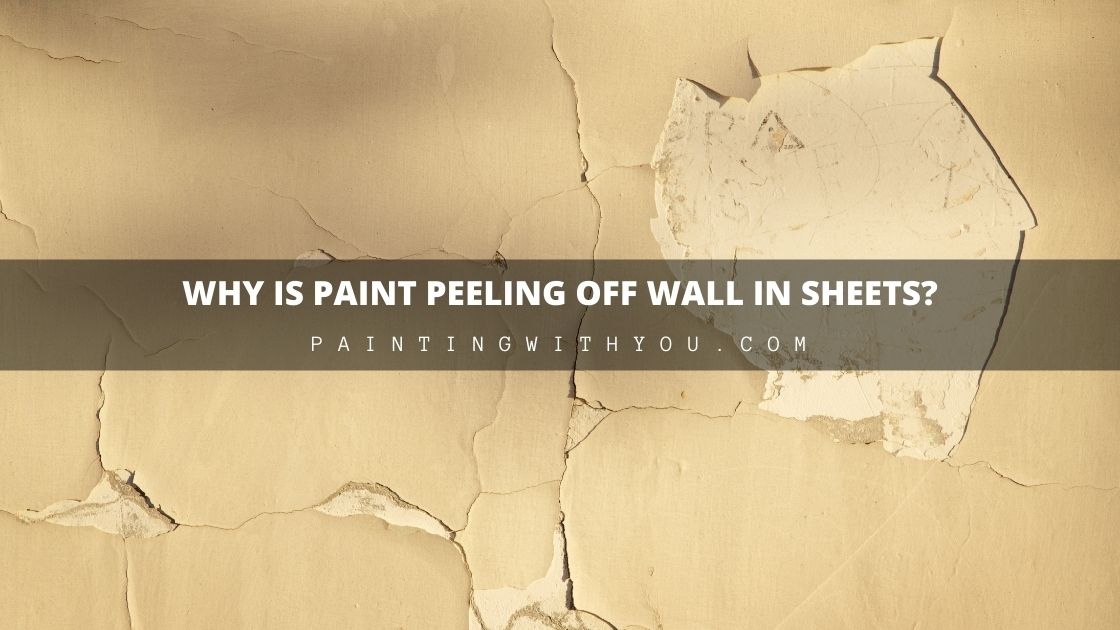Paint peeling off is indeed an eyesore for most of us. It becomes more frustrating when your newly painted wall starts blistering or flaking off, leaving you with no other option but to repaint again.
Paint peals because off:
- Moisture
- Improper preparation
- High humidity
- Poor quality paint
- Too Thick paint
- Extreme weather
Fortunately, you can avoid these problems if you know what causes them.

Why does paint peels off a wall in sheets?
There are many causes of peeling paint, but some of the most common include:
- Moisture – if moisture is getting into the wall, it can cause the paint to peel. It can sleep either through the walls or by condensation on the inside of windows.
- Improper preparation – if the wall is not properly prepared before painting, the paint may peal off. Clean your wall properly. It should not be dirty or wet before painting.
- Temperature and humidity – If paint dries too quickly or too slowly due to extreme temps or humidity, it may not adhere correctly.
- Poor quality paint – sometimes, low-quality paints don’t adhere well to the surface and may start peeling off soon after application.
- Thick paint – if the paint was applied too thickly can cause it to dry slowly and form a film on the surface. This film can eventually crack and peel away from the wall.
- Extreme weather – extreme temperatures can cause the paint to dry too quickly or too slowly, which can lead to peeling after short amount of time.
- Age and sun exposure – Over time, especially outdoors, sun damage can degrade paint causing it to peel and flake off.
- Surface contamination – Grease, oil, soap and other contaminants left on the wall prevent paint from bonding and cause peeling.
What Should You Do When You Notice Paint Peeling Off?
If you’re experiencing peeling paint, the first step is to identify the cause. Once you know what’s causing the peeling, you can take steps to correct it.
For example, if the paint was applied too thickly, you can thin it out with some additional paint.
Similarly, if the wall isn’t clean or dry, you can clean it and allow it to dry completely before painting.
Moreover, if the problem is caused by moisture, you may need to install a Radiant barrier on the ceiling and proper underlayment with a vapor barrier on the floor .
NOTE: In most cases, peeling paint can be corrected fairly easily. By taking corrective action as soon as you notice the problem.
What Is The Best Way To Prevent Peeling Paint?
Peeling paint can be a frustrating problem, but it’s usually easy to avoid by taking adequate measures when you are painting your wall. A few precautions that can increase the longevity of your end project:
1. Make sure the wall is clean and dry before painting
If the wall is not clean or dry before painting, the paint may peel off when it dries. Make sure to clean the surface thoroughly and allow it to dry completely before applying any paint.
2. Apply the paint in thin layers
Applying the paint in thin layers can also help to prevent peeling. This will allow the paint to dry more quickly and reduce the chances of it forming a film on the surface.
If the paint was applied too thickly, you can thin it out with some additional paint or primer. This will help the paint to dry more quickly and reduce the chances of peeling.
NOTE: If the paint is peeling off in large sheets, it may be because the surface is not primed properly. In this case, you may need to apply a primer before painting. A primer will help the paint to stick better to the surface and reduce the chances of peeling.
3. Install insulation or a vapour barrier
If moisture is causing the peeling, you may need to install insulation or a vapor barrier to keep the moisture out. This will help to protect the wall and prevent further peeling.
4. Use good quality paint that dries quickly
If you’re using good quality paint that dries quickly, there is less chance of the paint peeling off the wall. Look for paints that are labeled as “low-VOC” or “no-VOC”, as they are less likely to cause problems with peeling.
5. Keep an eye on the weather
Pay attention to the weather and avoid painting in extreme temperatures or humidity. Extreme weather can cause the paint to dry too quickly or slowly, which leads to peeling.
6. Allow the paint to dry completely between coats
Don’t apply additional coats of paint until the first coat has completely dried. Applying additional coats before the first coat is dry can cause the paint to peel.
7. Make sure the wall is properly prepared
If you’re using good quality paint, make sure the wall is properly prepared before painting. This will help to ensure a good bond between the paint and the surface and reduce the chances of peeling.

How Do You Remove Peeling Paint?
There are a few different ways to remove peeling paint, depending on the severity of the problem.
- Use a scraper or a wire brush to remove as much of the old paint as possible.
- Sand the surface to create a smooth surface for the new paint to adhere to.
- Brush off any remaining flaking paint.
- If the paint is in bad condition and there is a lot of peeling, you may need to remove it completely before painting again.
Related Questions
There is no definitive answer to this question as lead paint can peel for many different reasons. However, if you are concerned that the peeling paint may contain lead, it is always a good idea to get it tested by a professional.
There is no definitive answer to this question as both oil-based and water-based paints have their own advantages and disadvantages. However, in general, oil-based paints are more durable than water-based paints and less likely to peel.
Yes, you can paint over flaking paint. However, the new coat of paint may not stick to the old coat if it is peeling off. In this case, you may need to remove the old layer before painting again. To do this, use a scraper or a wire brush to remove as much of the old paint as possible.
- Remove the tape as soon as possible after painting. The longer the tape remains on the wall, the more likely the paint will adhere to the tape and peel away with it.
- Use a painter’s tape designed for delicate surfaces when painting. Avoid low-adhesion, lightweight tapes which are more likely to pull off paint.
- Seal the edges of the tape with the finish paint to create a smooth transition between the taped and untaped areas. This prevents paint from seeping underneath.
- Apply a coat of primer before painting, especially on bare drywall. Primer creates a uniform surface for the paint to adhere to.
- Sand down any rough paint edges after removing tape to smooth them out. Wipe away any dust.
- Spot prime any exposed underlying surface after you remove tape and sanding. This prepares the area for fresh paint.
- Carefully cut along the paint edges with a utility knife to remove any film of dried paint before repainting.
- Apply at least 2-3 thin, even coats of finish paint over areas where peeling occurred to completely seal the surface.
There are a few common reasons:
- Insufficient surface preparation
- Excess moisture
- Applying paint too thick
- Low quality or improper paint
- Contaminated drywall surface
- Old, compromised drywall
- Climate and environment

